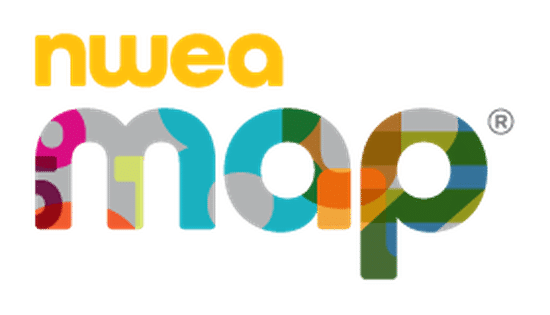
Kindergarten MAP Test Prep: Strategies for Your Child’s Success
Early education is vital to a child’s growth and development. It shapes the foundation for your kid’s future education. Along the way, numerous assessments will be put to monitor the progress of students. Assessments are conducted as early as the kindergarten stage.
The MAP test is designed to evaluate a student’s performance at school. It gives teachers and parents an idea of how each student is doing compared to the previous semester. Thus, a more suitable studying strategy can be formulated.
Table of Contents
What Is the MAP Test?
MAP, which stands for Measures of Academic Progress, is a series of tests administrated to kindergarten students for the duration of their early years of education until they are promoted to the 1st grade.
Each year, the MAP test is distributed three times in September, February, and June, spreading across the academic calendar. The frequency of the MAP test gives a fairer assessment of every student’s performance throughout the year. Results are recorded for schools and parents to review.
The MAP test covers mainly the mathematics and reading abilities of students. The entire process is digitalized without a time limit as young children tend to lose focus quickly. It gives children more freedom and flexibility to ensure a comprehensive test environment.
In the entire test series, graphs are used heavily to aid children in understanding the questions. Audio tools are also provided as some early learners are still not ready to read. These visual tools and headphones provide an all-rounded assessment for students from different backgrounds to monitor their progress.
How Does the MAP Test Assess Students’ Performance?
Two main areas are examined in the MAP test, they are math and reading skills respectively. A smart system is adopted to divert students with advanced knowledge into more challenging questions. The more a student answers correctly, the more difficult questions will be given in the next section.
MAP Math
Basic math concepts are covered. With the help of visual aids, students are introduced to the simplest form of summation and subtraction. For example, the pre-kindergarten goers will get a graph showing two pots of plants with different numbers of flowers growing. Students either have to compare the numbers and point out the one with more flowers or calculate the total amount of flowers.
Students will also have to identify small numbers from 1 to 10, match the shapes, and compare numbers. The questions will repeatedly involve numerical recognition to test a student’s ability to identify basic numbers.
If a student answers more than five questions correctly in the first section, they will be bumped into the tougher part where they will face more advanced calculations and identification. It involves matching numerical numbers to words, counting more numbers, and identifying more challenging shapes.
All of the questions come with an audio narration as young children in this age group do not develop their reading skills simultaneously. There are a total of 43 questions for the set. Students can take their time to complete the test as there is no time limit.
MAP Reading
Phonological awareness is the basic component of the MAP reading test. A dozen of words will be provided for students to pick the rhyming ones. It measures a student’s phonics knowledge and sound development. An audio aid will be offered to help students discriminate against the sound to arrive at the correct answer.
Then, students have to select the words mentioned in the audio tool. Clues can be drawn from the syllable composition. In this part, students with a deeper understanding of the basic formation of English are expected to demonstrate a quick response in matching the sound to words. Graphs will also be given for students to locate the similarity or differences. Students are expected to be well-versed in common objects like the sky, trees, dogs, grass, etc.
For students that are moved to the more difficult part, they will answer questions finding the meaning, synonyms, and acronyms of words. During the most difficult section of the MAP test, students are asked to choose the correct punctuation, grammar, and words to use when constructing a sentence. This part is usually only present for students passing to the advanced level as some students are not familiar with writing.
Seeing how some students are not prepared to write fluently yet, all the answers use recorded responses. There are a total of 43 questions. The ratio for each topic varies from test to test with the overall structure remaining the same.
How to Prepare for the MAP Test?
1. Practice It With Your Child
Most online resources you will out there are not specific to the MAP test. They are merely general exercises for pre-schoolers. Enlisting help from those sites will not grant your child a higher chance of success in the real MAP test.
On the other hand, TestPrep Online is a platform run by education professionals that have specialized in child education for years. The full practice set comes with multiple quizzes for the math and reading parts. All of the questions come with visual and audio aids, which are in the same style as the real MAP test. Your child will familiarize themselves with the format in no time. Furthermore, the study progress is recorded so you can see exactly how your child is improving each time, what is their biggest strengths and weaknesses, and how to sharpen their skills.
2. Attend Tutorial Classes With Your Kid
Physical tutorial classes are popular in most areas. Depending on your location, these tutorial classes range from general MAP practices to specific sections. The purpose of these tutorials is not to only familiarize your kid with the examination content but also to enhance their confidence so they can say the correct answer without hesitation.
Although there is no time limit on the MAP test, kids have struggled to perform due to anxiety in answering questions. By mingling children together in a group, it helps them get used to the study environment.
3. Join the Kindergarten Map Practices
Some kindergartens offer extensive MAP preparation classes for parents and pre-schoolers to get a sense of what it’s like to have the MAP test monitor their progress. The MAP test directly influences your kid’s chance of getting into a good school in the future.
As educators, the teachers have a great understanding of how the teaching strategy in the school influences students. You can ask them for advice about the weaknesses in the school so you can better prepare your kid. Don’t be weary about asking the teachers to give you some after-school consulting sessions if your kid has been underperforming in a few MAP tests consecutively.
4. Monitor the Progress and Time the Test
In the real MAP test, students can take as much time as they need. However, when you are helping your child study for it, it is ideal to time the test. It gives you an idea of how much time it takes to complete the set on average. Besides, timing the best also pushes the young toddler to focus more as well as to have a more serious attitude toward the test.
Once you start timing the test, you can compare the variance in each set and see what elements encourage your kid to be more proactive in answering. If your child manages to improve their time, rewarding them is the best way to give them an incentive to put in effort in the school test.
5. Practice Speaking the Answer Out Loud
Note that the test is audio-based and your child has to speak up. Therefore, doing the tests repeatedly allows them to grasp a better idea of how to answer strategically. Encourage them to construct their sentence in a logical manner before speaking.
Generally speaking, the MAP test is fairly lenient toward pre-schoolers. Answers that are unclear will still be given points if the keywords are present. Despite that, if your child is unable to catch the keywords, they will not gain any points. On the contrary, if they can construct paragraphs to relay their thoughts, they will be able to catch some marks even if the answer is not entirely correct.
6. Make the Learning Environment Fun
Children have a short attention span. Doing tests are not appealing to them. To build a positive studying environment, incorporate some fun in the preparation. Instead of showing a picture, bring out some chocolate candies as visual tools. Award them with ice cream if they can get it right.
Using their favorite tool or item to promote a positive learning vibe is beneficial to the child’s mental growth. They will not loathe going to school or find it daunting. Studying should be an enjoyable process and not a demon to beat.
What Is the Passing Score for the MAP Test?
Technically, there is no passing score for the MAP test as it is a referencing tool to monitor a school’s performance overall as opposed to individual students’ ability. Although the MAP test is widely used by educational institutions as a benchmark to see how kindergarten children are doing, posing a passing score does not achieve much because each school has its standards and regulation.
The MAP test scores are the most useful when comparing them internally within the unit. The average scores for the math and reading tests are often close to each other at around 145. Parents do not have to overthink about getting a lower average score than other schools in the area. You should focus on your child’s skills in these fields to improve future scores.
To be classified as the top-performing students, they have to score at the 95th percentile, which roughly equates to 168 points. Students at this percentile intelligently excel with kids in the same age range. They demonstrate better organizational and reasoning skills. If parents continue to nurture their skills, it is highly likely that the children will be able to skip a few grades in middle school.
Even if your child does not achieve satisfactory results, parents should not be discouraged. It is important to know that kindergarten children are still in their developing stage with their potential curbed. With suitable training methods and studying guides, any child has the possibility to land an outstanding score on the MAP test.
Summary
The MAP test is one of the first tests your child will ever come into contact with in their education. Having a good start will undoubtedly boost their self-esteem and love for learning. It can be perplexing to find the right guide without any prior experience. As a first-time attendant, you should download the full copy of your MAP test on TestPrep Online. Getting your child to fall in love with education has never been easier with the fun study modules included!
Sarah is an accomplished educator, researcher and author in the field of testing and assessment. She has worked with various educational institutions and organisations to develop innovative evaluation methods and enhance student learning. Sarah has published numerous articles and books on assessment and learning. Her passion for promoting equity and fairness in the education system fuels her commitment to sharing insights and best practices with educators and policymakers around the world.






